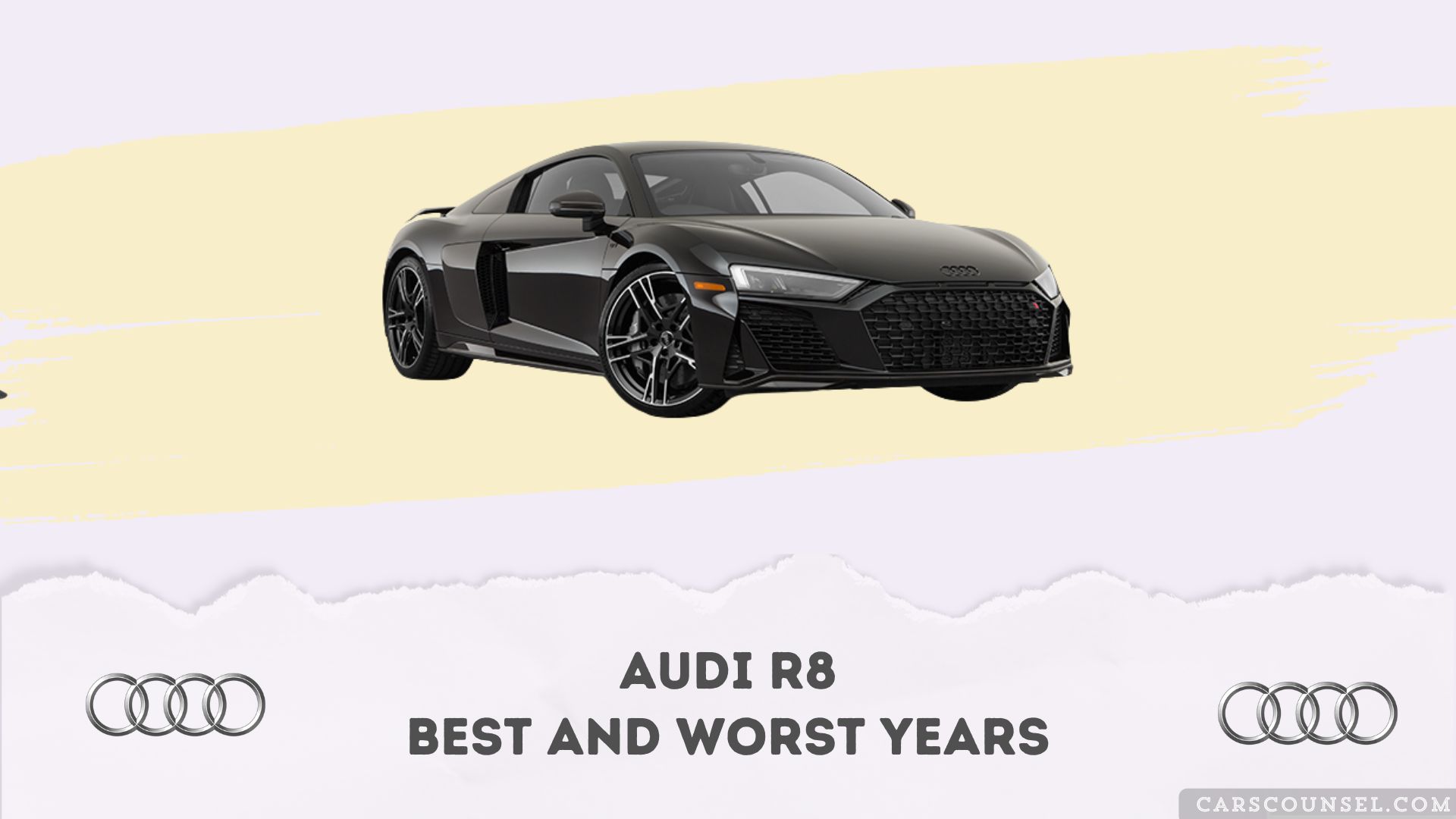When considering an Audi R8, you’ll want to avoid the 2008, 2014, and 2015 models, which have issues with ignition coils, transmission, and engine performance. On the other hand, models from 2009 to 2013 and 2016 to 2019 are more reliable.
The 2017 and 2018 versions stand out for their robust performance and low maintenance needs. Now, let’s delve into these differences and what they mean for ownership.

Quick Navigation
Key Takeaways
- Worst Audi R8 Years: 2008 and 2014-2015 models are least desirable due to durability, ignition coil, transmission, and engine performance issues.
- Best Reliable Audi R8 Years: 2009-2013 and 2016-2019 are known for solid performance with fewer mechanical problems and lower maintenance needs.
- Notable Common Problems: Ignition coil failure, V10 engine bearing wear, premature clutch wear, oil leaks, and carbon buildup on intake valves.
- Used Model Recommendations: 2009-2019 models with V10 engines and S-Tronic (dual-clutch) transmission are preferred for reliability and performance.
- Maintenance Tips: Regular service (oil, spark plugs, filters) can prevent costly repairs and keep the R8 running reliably for years.
Audi R8 Years to Avoid
When picking the right Audi R8, you should be mindful of specific model years that have more issues than others.
The worst years for the Audi R8 are generally considered to be 2008, 2014, and 2015.
The 2008 model had problems with consistency and durability, while the 2014 and 2015 models faced issues with faulty ignition coils, transmission troubles, and engine performance.
These factors can affect the overall performance and reliability of the vehicle, making them the least desirable models among the otherwise reliable Audi R8 lineup.
Common Problems With the Audi R8
The Audi R8, despite its reputation for reliability, can be plagued by several issues.
Common problems include ignition coil failure leading to engine misfires, bearing wear in the V10 engine, and premature clutch wear, especially in used cars with higher mileage.
Oil leaks and rust-prone oil lines have also been reported, potentially affecting performance and requiring costly maintenance.
Carbon buildup in the intake valves can cause rough idling and sluggish acceleration.
The magnetic ride suspension is praised for comfort but may eventually require replacement.
Addressing these reliability issues promptly helps maintain the R8’s legendary performance.
Reliable Audi R8 Model Years
If you’re looking for reliable Audi R8 model years, several standout options offer a blend of performance and dependability.
Regular maintenance is key to ensuring these vehicles remain in top condition.
The first generation Audi R8, especially with the S-tronic transmission, is particularly noted for its reliability.
- 2009-2013: Known for their solid performance and fewer issues.
- 2016-2019: These second-generation models continue the reliability trend.
- 2017-2018: Often cited as among the best due to their robust performance and low maintenance needs.
Which Audi R8 Models Are Good Used Vehicles?
Audi R8 models make strong contenders on the used supercar market, especially if you know where to look in the model years.
The best years for used Audi R8 vehicles are typically between 2009 and 2019, excluding some early models with the less refined R-Tronic transmission.
Reliable models often feature the powerful V10 engine, well-regarded for its high-speed performance and durability.
Manual transmission versions appeal to purists but consider the smoother, more reliable S-Tronic dual-clutch from later years.
As a sports car, the R8 combines thrilling performance with strong reliability, making select used models excellent choices for enthusiasts.
Maintenance and Ownership Costs for the Audi R8
When considering ownership of an Audi R8, you’ll need to factor in its distinctively high maintenance costs.
While the vehicle is known for reliability, expect annual service to run around $1,250, including oil changes, spark plugs, cabin filters, and engine filter replacements.
Oil changes alone often cost $150–$300, while brake pads and rotors can set you back $2,000–$2,500 for parts and labor.
Some additional key points:
- Annual Service: Covers oil changes, spark plugs, cabin filters, and engine filters.
- Braking System: Ceramic brakes last nearly the car’s lifetime but require occasional cleaning; pad and rotor replacements are pricey.
- Preventive Care: Regular maintenance, including timely oil changes and inspections, minimizes costly repairs down the road.
When looking at performance cars, make sure to check out our guides on models like the Audi A6 Allroad, Audi S7, Audi S6 and Audi RS3. Knowing which model years to target and which to avoid is crucial. Our expert reviews break down these models, providing insights into the years that are celebrated for their engineering excellence and driving satisfaction, as well as those that are best to avoid due to potential issues.

